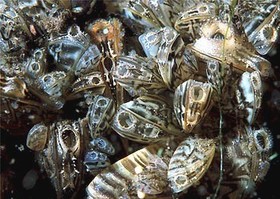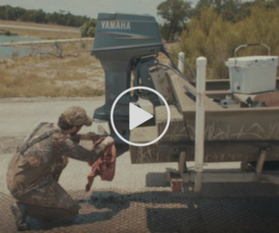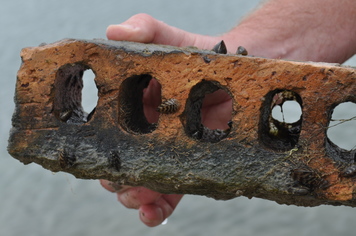|
|
|
|
 In fall and winter, cooler temperatures mean boaters must be especially vigilant to protect our lakes. Invasive mussels like zebra mussels and quagga mussels transported on boats can survive much longer out of the water when weather conditions are cold and humid versus hot and dry.
Boats stored in the water on lakes known to have invasive mussels must be decontaminated and inspected, and they also need to dry completely before they are launched in another lake. During mid-summer, at temperatures above 80F, a boat may take only 5 days to dry after decontamination, but when temperatures start to cool down, dry times need to be extended. At 40F or cooler, a 30 day dry time is recommended. See the ‘Dry Time Estimator’ on the Aquatic Invasive Species Network website for estimates.
Always err on the side of caution and call TPWD for guidance at our 24/7 hotline at 512-389-4848, or email us at aquaticinvasives@tpwd.texas.gov.
|
Q: Do zebra mussels help clean lake water?
 A: Zebra mussels do filter the water, increasing water clarity. However, this isn’t good for lakes because zebra mussels create dense colonies, filtering all of the plankton from large volumes of water. This can disrupt the lake’s food web as zebra mussels out-compete baitfish like shad for food, which can then affect sport fish and recreation as well as threatened or endangered fishes
|
 Invasive species like giant salvinia can quickly grow to cover vast expanses of fresh water, blocking access to prime waterfowl hunting spots.
If you hunt by boat, you can prevent spreading these invasive species by cleaning, draining and drying all equipment before leaving any water body. First, clean and remove all visible plant material from your boat and trailer and check camo nets carefully. Then drain water from all equipment before transporting it anywhere, and dry anything that came in contact with water before entering another water body. ANY gear that's been in the water can carry invasive species, so be sure you also clean, drain, dry decoys, waders and marsh sleds too.
Watch this short video about how to clean, drain and dry.
|

 If you're on a Texas lake not known to have zebra mussels, help us keep an eye out! It is very simple and inexpensive to build a sampler to watch for them – all you need is a rope and a brick.
Tie one end of the rope to the brick and the other end to a dock and make sure the rope is long enough that the brick hangs at least 4-6 feet deep (or just above the bottom in shallow water). Pull the brick out of the water about once a month to check for zebra mussels. Watch out for sharp shells, but run your hand along the brick to feel for small shells. Zebra mussels are hard to see when they’re young and can look like sand grains. Over time the brick will look dirty, but that’s a good thing! You want the brick to grow a layer of algae or ‘biofilm,’ which is attractive to settling zebra mussels.
If you find zebra mussels or anything suspicious on your sampler, email the info to aquaticinvasives@tpwd.texas.gov.
|
TPWD Zebra Mussel Contacts
Coordination on Infested Boats:
-
Brian Van Zee, TPWD Regional Director, (254) 495-8341
-
Monica McGarrity, Aquatic Invasive Species Team Leader, (512) 552-3465
- 24/7 Law Enforcement Hotline, (512) 389-4848
|
|
|
|
|